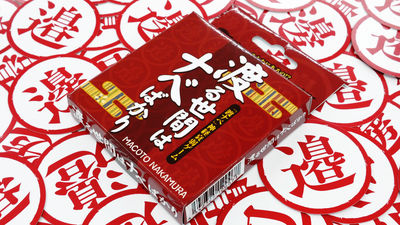A review of the card game 'Trio' in which not only memory but also strategy is important in an unusual game style called 'nervous breakdown with a hand'

' Trio ' is a game similar to a memory game in which you use only 36 cards with numbers from 1 to 12 written on them to guess the numbers on cards in your hand or in the field. Engames provided me with Trio, so I immediately played it to see what kind of game it was.
Game Introduction: TRIO Japanese Version | Engames
The 'Trio' package looks like this.

Inside was an instruction manual and a card.

There are 36 cards in total, 3 of each numbered from 1 to 12.

'Trio' has two ways to play: ' Simple Mode ' and ' Spicy Mode ', and a ' Team Battle ' rule that can only be played when there are four or six players. This time, we played in simple mode with four players, in order.
In simple mode, 36 cards are shuffled and dealt face down to each player: 9 cards for 3 players, 7 cards for 4 players, 6 cards for 5 players, and 5 cards for 6 players. The remaining cards are placed face down in the center.

The player who receives the cards turns them face up so that only they can see them, and sorts the cards in ascending order of numbers. This completes the preparation.

When it is a player's turn, they take turns turning over cards one by one, starting from the 'card in the middle' or 'their own or other players' hands.' When turning over a card in the middle, it doesn't matter where you turn it over, but when turning over a card from your own hand, there is a rule that you must turn over the 'lowest number' or 'highest number' first. When turning over a card from someone else's hand, you request the other person to 'turn over the card with the lowest number' or 'the card with the highest number,' and the requested player must turn over the specified card.
Players can choose which card to turn over from the following three options:
1: 'Central' 8 sheets
2: Your 'hand'
3: Other players' 'hands'
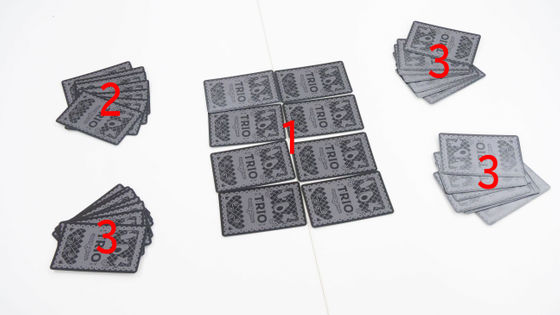
You can start looking at cards from any position. You can also look at cards from the same person's hand by turning them over in succession. If you turn over cards with different numbers in succession, your turn ends and you return the revealed cards to their original place. If you turn over the same number, your turn continues. If you draw three cards with the same number in a row, you move all three cards to your hand and get them, and your turn ends. The player who finally gets three sets of cards or one set of '7' cards wins.
So, the first player first asks the player next to him to play the 'highest numbered card.'
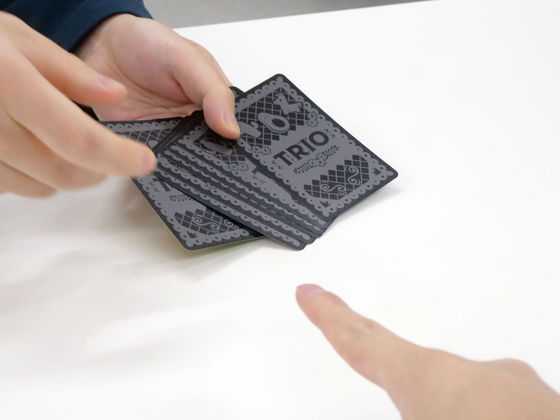
When the player next to you also plays the largest card, a card with a different number than the card the first player turned over appears. If a card with a different number than the cards you have revealed so far appears, your turn ends.
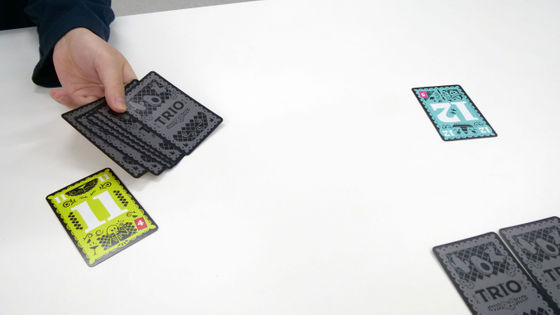
The next player first flips over the card in the middle. The number that comes up is '8'.
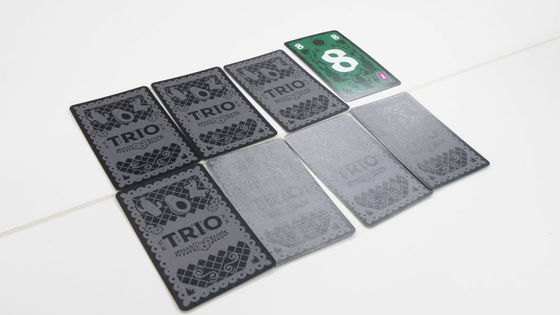
The player then turns over the center card.
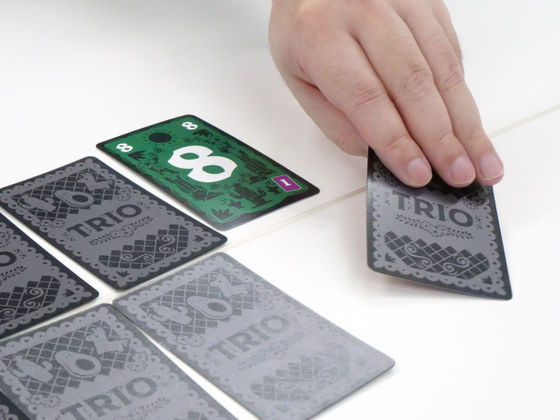
It was '4'. Since I drew a different number, my turn is over.
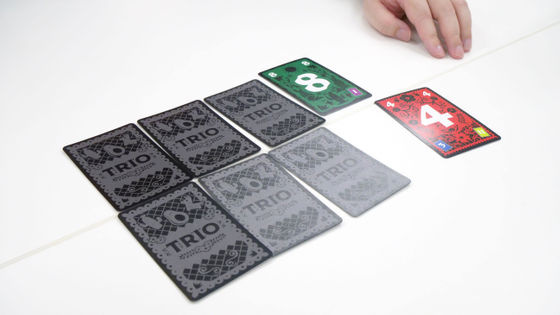
The next player flips over a card from the center, revealing an '11.'
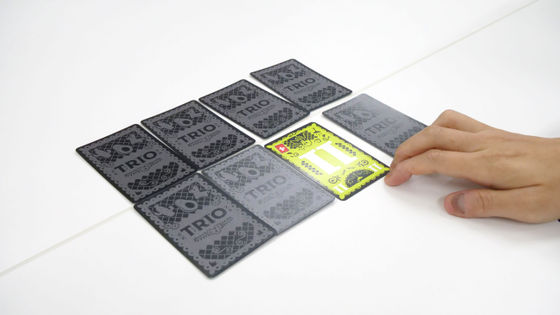
The highest number in my hand was also 11, so I revealed it.
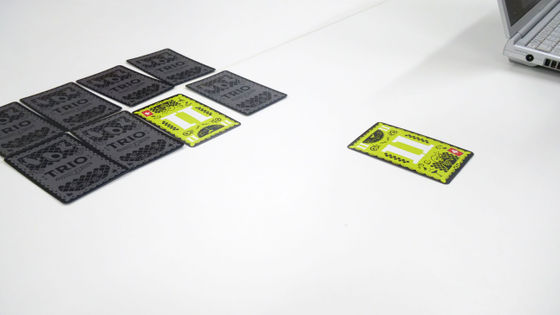
Furthermore, he remembers that a player had turned over an '11' at the request of the first player, and asks that player to 'put down the largest number.' Since three cards with the same number were turned up, he gets all three and ends his turn.
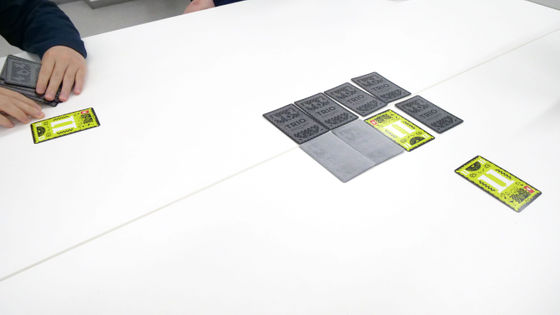
The next player asks the other players to play the 'lowest number.'
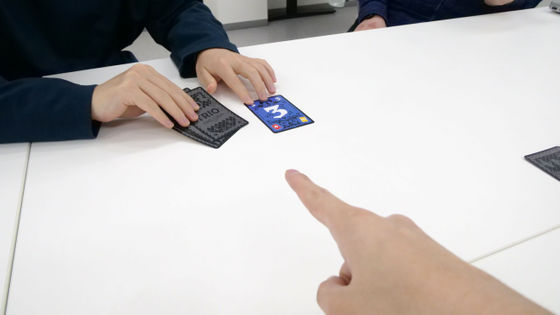
Next, you ask the same player to play the 'smallest number' again. In this way, it is OK to make the same request to the same player.
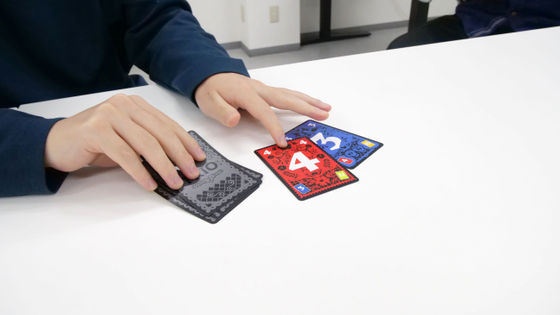
The rules are very simple, so the game progresses smoothly, with some players reaching the target in under 10 minutes.
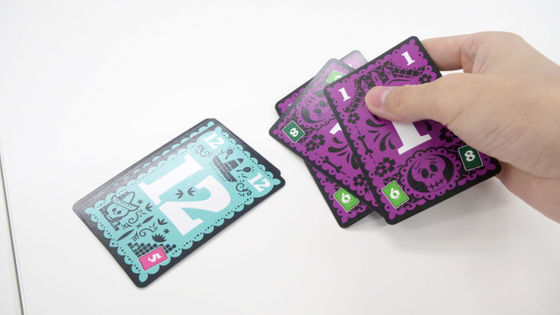
A feature of 'Trio' is that you gradually get to know your opponent's hand by asking questions such as 'What's the maximum value?' and 'What's the minimum value?'. What's interesting is that you will be able to make logical deductions and make judgments such as, for example, 'This person declared their maximum value to be 9, so they must not have any more than 10,' or 'Since 12 has disappeared from the table, the next maximum value must be 11.'
The player who was in reach remembered the highest number that each player had played, so he made the other three players play their highest cards and won the game. Since everyone was a beginner, the game took just over 10 minutes, excluding the time to read the rules.
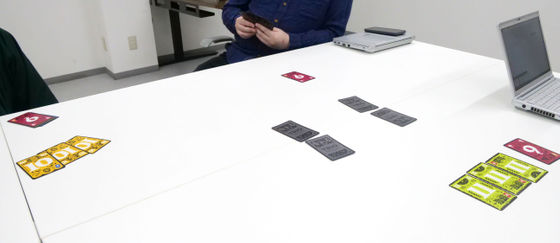
Next, play 'Spicy Mode'. The rules are almost the same as Simple Mode, but the victory condition has changed from 'collect three sets of cards of any kind' to 'collect two sets of combinations that add up to '7' when added or subtracted.' For example, in the image below, when you have three 2s, you can see that you only need to collect one of the following two combinations.
・'Three 5s': Because 2+5=7
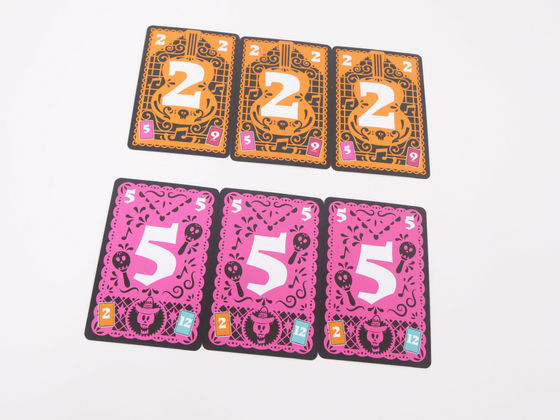
・'Three 9s': Because 9-2=7
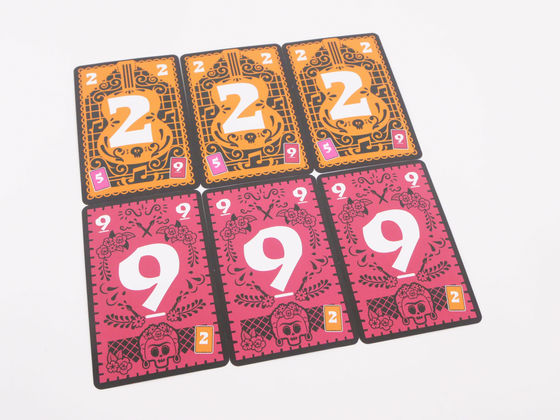
It's easy to understand which numbers you should combine with which, as they are written on the bottom left and right of the cards. Also, the victory condition of 'collecting a set of 7s' remains the same.
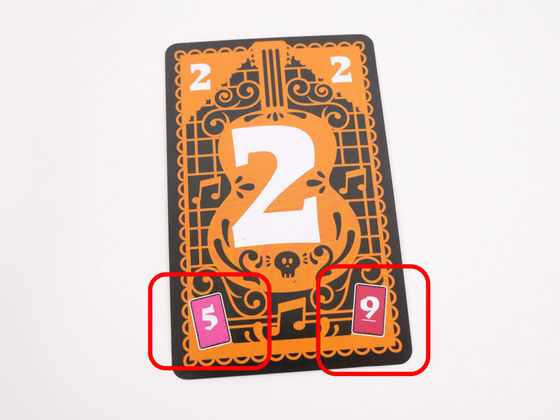
In spicy mode, you feel disappointed because you can't add or subtract cards to get 2 even though you've collected them, but you can't do anything about it! On the other hand, you may end up unintentionally stealing cards that other people want, which can lead to unexpected negotiations. Also, when you get the first set, you can roughly guess the next combination of cards you're aiming for, so it's easier to guess the cards in play than in simple mode.

Due to the rule that players must start by revealing the maximum or minimum value, it takes a long time to add or subtract all 7s. Just when it seems like the game is going nowhere, one player reveals a 7 from his hand. Unfortunately, this player misses it, but the next player digs up a 7 from the center card, and together with the 7 in his hand, they get three cards. This ends the game.

Next is the team game. In the team game, there are no cards in the center, and all the cards are dealt equally to each player. The players sitting diagonally opposite each other form a team, and the team that collects a total of three sets of cards or one set of '7's wins.
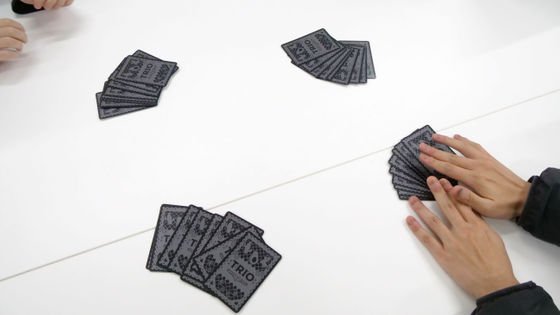
A unique rule of team battles is that 'you can exchange one card.' You can only exchange cards 'after the first hand has been dealt' or 'after the other team has collected one set of cards.' The card you exchange can be the largest, smallest, or the middle card, but you cannot discuss it with each other at all, and you cannot show where you will place the exchanged card in your hand.
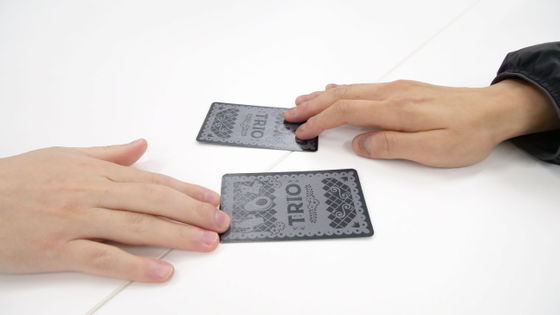
At first I wondered, 'What's the point of exchanging if you can't consult with each other?' But after playing for a while, I started to be able to read my teammates' thoughts, such as, 'If they played this card, that means they only had one of that number. If they had two, they wouldn't have traded it.' I also had some unusual experiences, such as when I played a '1' in an exchange, and my opponent also gave me a '1.' This gave me some room for deduction, like, 'If they played a 1, that means...'
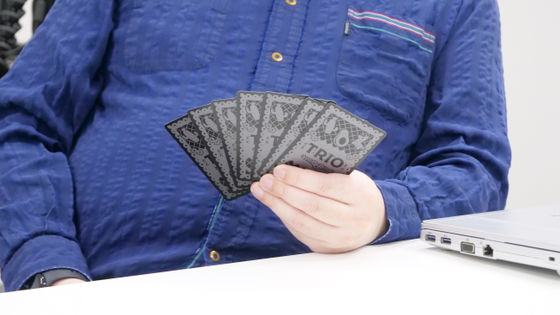
'Trio' is a simple game that uses only cards, and the rules are easy to understand in one go, so even small children can enjoy it. The base is 'Concentration', but unlike Concentration, where only memory matters, it has a more bargaining-like aspect, so the point is that you can create your own range of strategies. There were many exciting parts, such as 'Why is the number on the maximum card so low?! Is it really the maximum value!? (Shock)', 'I have two of the same number, so I can match it quickly! (Jealousy)', 'Oh, I'm starting to forget where that number is... (Looking into the distance)', and so on, and it was fun to play. As you can see, it only requires cards, so it takes up a lot of space to play, and the box is small, so it's easy to carry around and store anywhere, which is quite appreciated.
'Trio' is sold on Amazon.co.jp for 1,980 yen including tax.
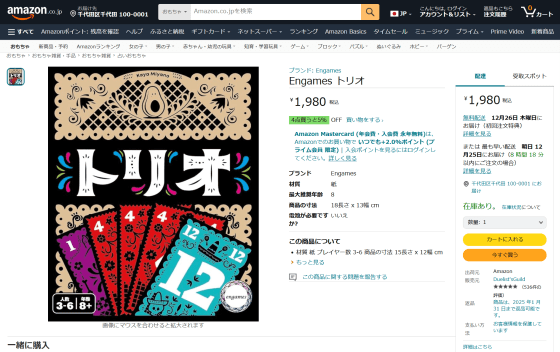
Related Posts:

